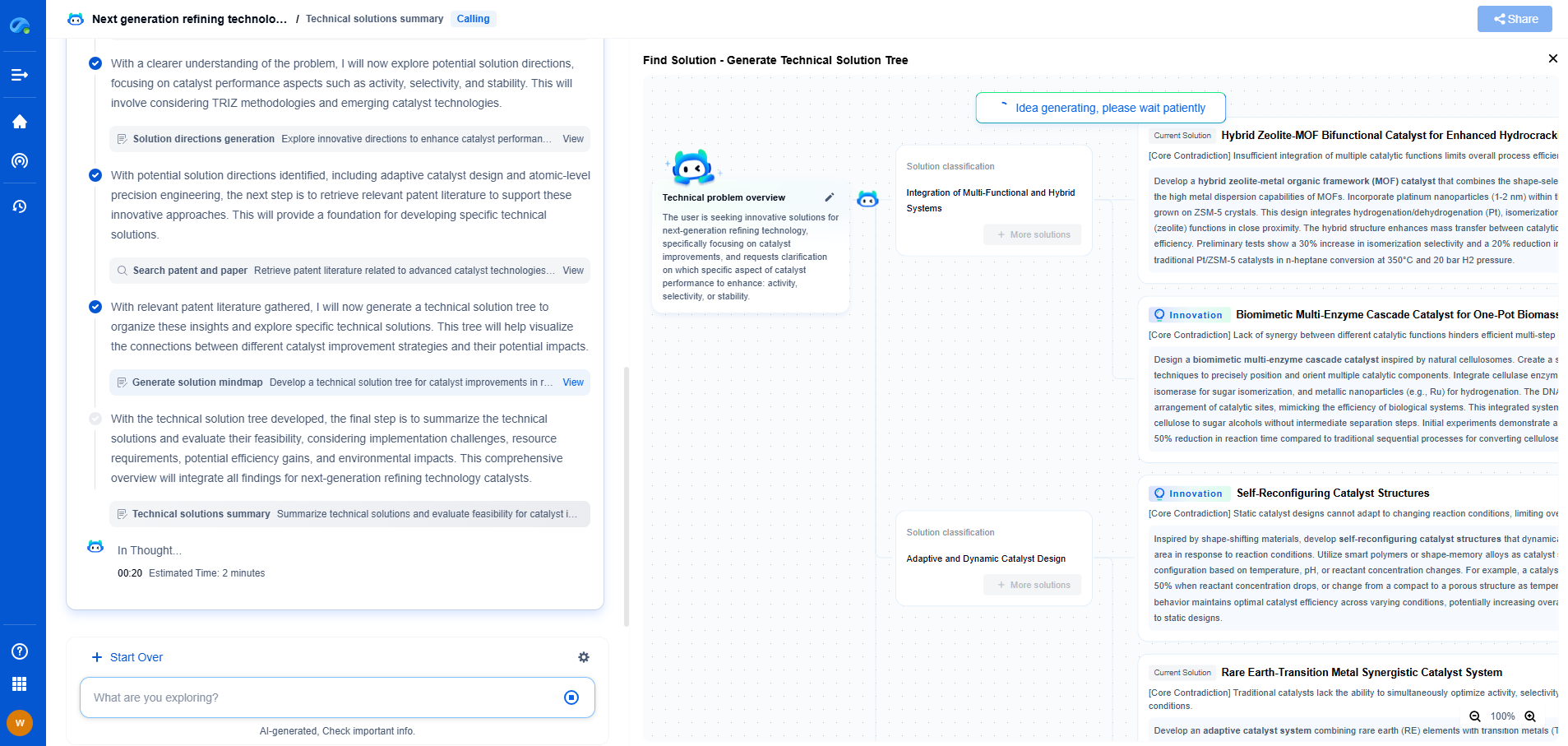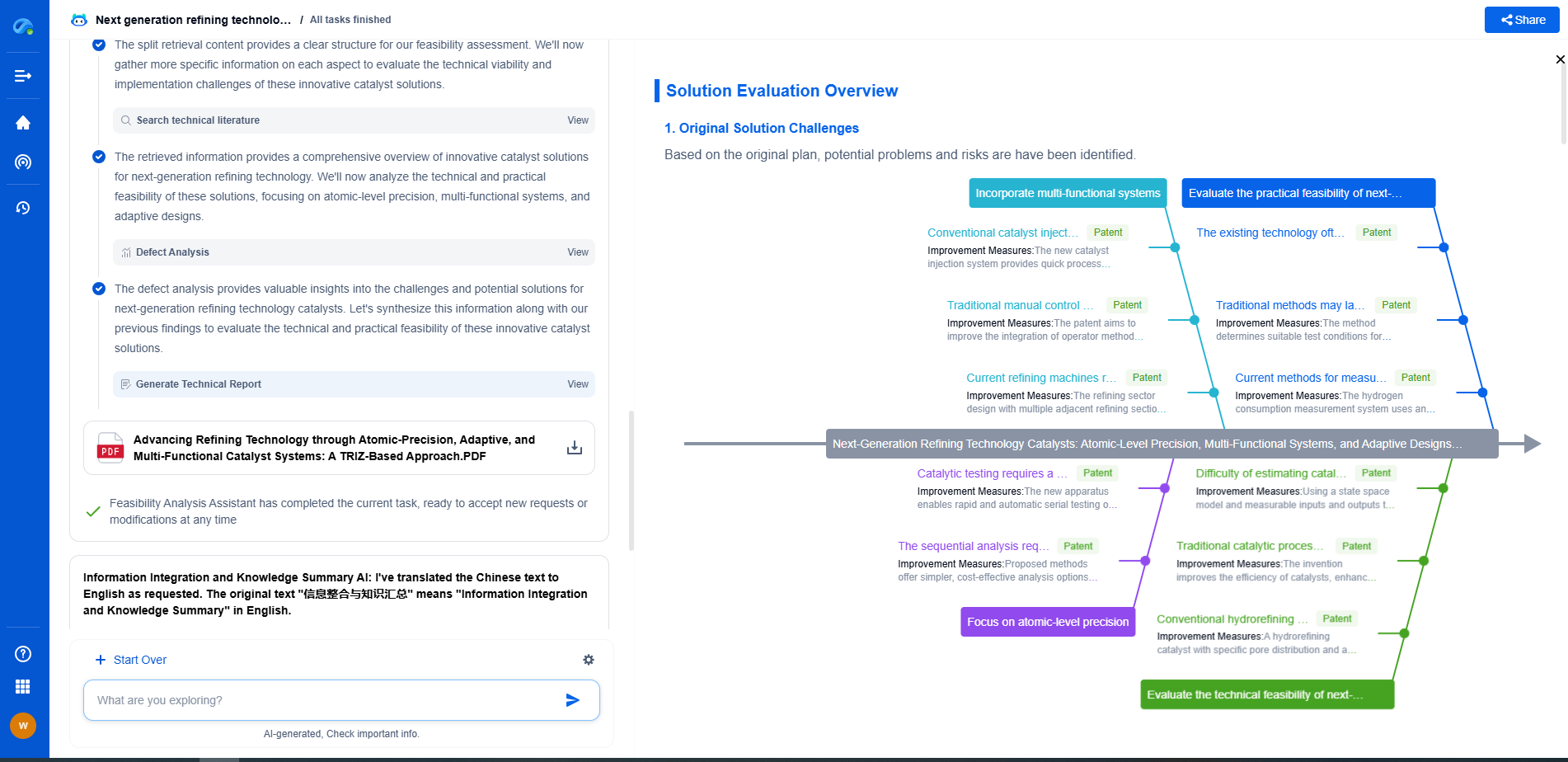What Is Blind Source Separation (BSS) and How Does It Work in Audio Applications?
JUL 16, 2025 |
Blind Source Separation (BSS) is a fascinating area of signal processing. It focuses on the challenge of extracting individual signals from a mixture of sources. In the context of audio, imagine attending a party filled with chatter, music, and clinking glasses. BSS is akin to the skill of isolating the melody of a single instrument amidst the cacophony. This technique is invaluable in various fields, from telecommunications to music production, offering innovative solutions to complex problems.
Understanding the Basics of BSS
At its core, BSS involves processing a mixed signal to separate and recover the original source signals without prior information about the source characteristics or the mixing process. The term "blind" refers to this lack of prior knowledge. The goal is to decompose a complex audio signal into its components, which may include voices, music, or ambient sounds.
Key Algorithms in BSS
Several algorithms are at the heart of BSS, each with unique methodologies and applications. The most prominent include Independent Component Analysis (ICA), Principal Component Analysis (PCA), and Non-negative Matrix Factorization (NMF).
1. Independent Component Analysis (ICA): ICA is widely used in BSS as it focuses on separating statistically independent signals from a mixture. It assumes that the source signals are non-Gaussian and independent of each other. ICA finds a transformation to maximize the statistical independence of the output components.
2. Principal Component Analysis (PCA): Although PCA is primarily a dimensionality reduction tool, it is occasionally used in BSS. It identifies orthogonal components (principal components) with the highest variance, which can be useful in scenarios where the mixture signals are correlated.
3. Non-negative Matrix Factorization (NMF): NMF is particularly useful in audio applications where the signals are non-negative, such as spectrogram data. It factorizes a matrix into two matrices with non-negative elements, capturing the underlying patterns in the data.
Applications in Audio Processing
Blind Source Separation has numerous applications in audio processing, each leveraging the unique strengths of BSS algorithms to enhance user experiences and solve complex challenges.
1. Music Production: In music, BSS is employed to isolate and manipulate individual tracks from mixed audio recordings. This allows sound engineers to remix music, enhance specific instruments, or create karaoke versions by removing vocals.
2. Speech Enhancement: BSS is crucial in speech enhancement, particularly in noisy environments. It can isolate voice signals from background noise, improving the clarity and intelligibility of speech in telecommunication systems and hearing aids.
3. Audio Forensics: In forensic audio analysis, BSS helps separate overlapping conversations or sounds from recordings, aiding in criminal investigations and legal proceedings.
Challenges and Limitations
Despite its powerful capabilities, BSS is not without challenges. The "blind" nature of the process means that without prior information, the separation is inherently ambiguous. The methods often rely on assumptions about the statistical properties of the source signals, which may not always hold true. Additionally, BSS algorithms can be computationally intensive, posing challenges in real-time applications.
Future Prospects and Developments
The field of BSS continues to evolve with advancements in machine learning and artificial intelligence. Researchers are exploring the integration of deep learning models with traditional BSS techniques, resulting in more robust and accurate separation processes. The future holds promise for improved real-time processing capabilities, making BSS even more effective and accessible in various audio applications.
Conclusion
Blind Source Separation represents a significant leap forward in the field of audio signal processing. By skillfully disentangling individual sources from complex audio mixtures, BSS opens up new possibilities across industries. From enhancing musical experiences to improving communication clarity and aiding forensic investigations, its applications are vast and varied. As technology progresses, the potential for BSS continues to expand, promising exciting developments in audio processing and beyond.
In the world of vibration damping, structural health monitoring, and acoustic noise suppression, staying ahead requires more than intuition—it demands constant awareness of material innovations, sensor architectures, and IP trends across mechanical, automotive, aerospace, and building acoustics.
Patsnap Eureka, our intelligent AI assistant built for R&D professionals in high-tech sectors, empowers you with real-time expert-level analysis, technology roadmap exploration, and strategic mapping of core patents—all within a seamless, user-friendly interface.
⚙️ Bring Eureka into your vibration intelligence workflow—and reduce guesswork in your R&D pipeline. Start your free experience today.
- R&D
- Intellectual Property
- Life Sciences
- Materials
- Tech Scout
- Unparalleled Data Quality
- Higher Quality Content
- 60% Fewer Hallucinations
Browse by: Latest US Patents, China's latest patents, Technical Efficacy Thesaurus, Application Domain, Technology Topic, Popular Technical Reports.
© 2025 PatSnap. All rights reserved.Legal|Privacy policy|Modern Slavery Act Transparency Statement|Sitemap|About US| Contact US: help@patsnap.com

